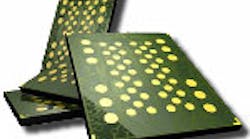Seagate’s Momentus XT hybrid drive combines flash and hard-disk storage with an intelligent cache controller designed for consumer applications. Its FAST (Flash-Assisted Storage Technology) Factor technology provides flash speeds with hard-drive capacity.
Flash storage is ubiquitous, and solid-state disk (SSD) drives are filling enterprise disk farms to deliver the high performance needed for today’s Internet services. SAS RAID controllers like LSI’s MegaRaid SAS 9260-8i (see “SAS RAID Controller Handles Hierarchical Storage” at electronicdesign.com) support a hierarchy of SSD drives and hard-disk drives (HDDs) delivering high performance with high capacity. These configurations tend to be rather expensive.
PMC Sierra’s Adaptec Series 6Q SAS RAID controllers use a hybrid approach to RAID that works at a more intimate level (see “SAS RAID Card Delivers SSD Caching” at electronicdesign.com). It allows an SSD to be paired with an HDD in a RAID 1 or RAID 10 configuration. Data is written to both drives but is read from the faster flash drive.
Like LSI’s controller, the Adaptec controller allows the user to choose the SSDs and HDDs as well as how they are configured. This is great for the enterprise or power users but major overkill for most users of PCs, laptops, or tablets.
Enter Seagate’s Momentus XT (see “Seagate Delivers 2nd Generation Hybrid Hard Drive” at electronicdesign.com). It showed up in 2010 and combined flash, hard-disk storage, and the cache controller in a single package. I thought the drive was impressive then (see “Hands-on Momentus XT Hybrid Hard Drive” at electronicdesign.com), but its latest incarnation really caught my attention.
Intelligent Use Of Flash
Seagate didn’t change the name, but the new Momentus XT adds more under the hood. The company calls the new technology FAST (Flash-Assisted Storage Technology) Factor, which improves on the “Adaptive Memory” technology employed in the hybrid drive’s original incarnation.
The Adaptive Memory technology handled the caching mechanism, which uses a delayed approach to caching. Data is initially written to the hard drive only. It tracks read operations and moves commonly read information into flash storage. Data read repeatedly will stay in the cache longer since it is more likely to be needed in the future.
It takes about three or four repeated operations to move data into flash. This meant that rebooting a computer with a Momentus XT drive a few times was required to provide optimum operation.
The drive works with any operating system. It also tracks disk use while the user is running applications so repeatedly used application code will wind up in flash as well. And, two of its new features bring it this year’s award—FAST Factor Boot and FAST Factor Flash Management support.
FAST Factor Boot addresses users who want fast boot times but rarely boot their machines. It reserves a small fraction of the flash for boot caching and then fills this space during the initial boot process. Seagate does not talk about the actual values, but a normal boot takes less than a couple of minutes. This prevents subsequent operations from pushing the boot data out of flash.
FAST Factor Flash Management is designed to optimize flash use and to minimize flash writes, increasing the flash lifetime. The drive will continue to work as a hard drive alone if the flash reaches end-of-life since all flash drives are capable of a limited number of writes.
Large blocks of sequential data may have only the first part placed into flash because reading from a hard drive is still efficient. Latency usually slows things down. The system can store enough data in flash to mitigate latency overhead, minimizing flash use.
Seagate combines the controller, flash, and hard drive into a single package while providing transparency to users. It has also improved reliability versus a more modular controller with individual drives.
The Momentus XT is not for all applications. It makes no sense in enterprise servers. Actually, it may be more advantageous in embedded applications where designers know how to take advantage of the FAST Factor technology. Of course, any OEM should make sure any processes are performed at least three or four times to “prime the pump.”
The latest Momentus XT drive ups the capacity of the hard drive to 750 Gbytes. It doubles the SLC flash storage to 8 Gbytes. It has a 6-Gbit/s SATA interface. With an MSRP of only $245, it is an impressive package and all a user has to do is install it.


